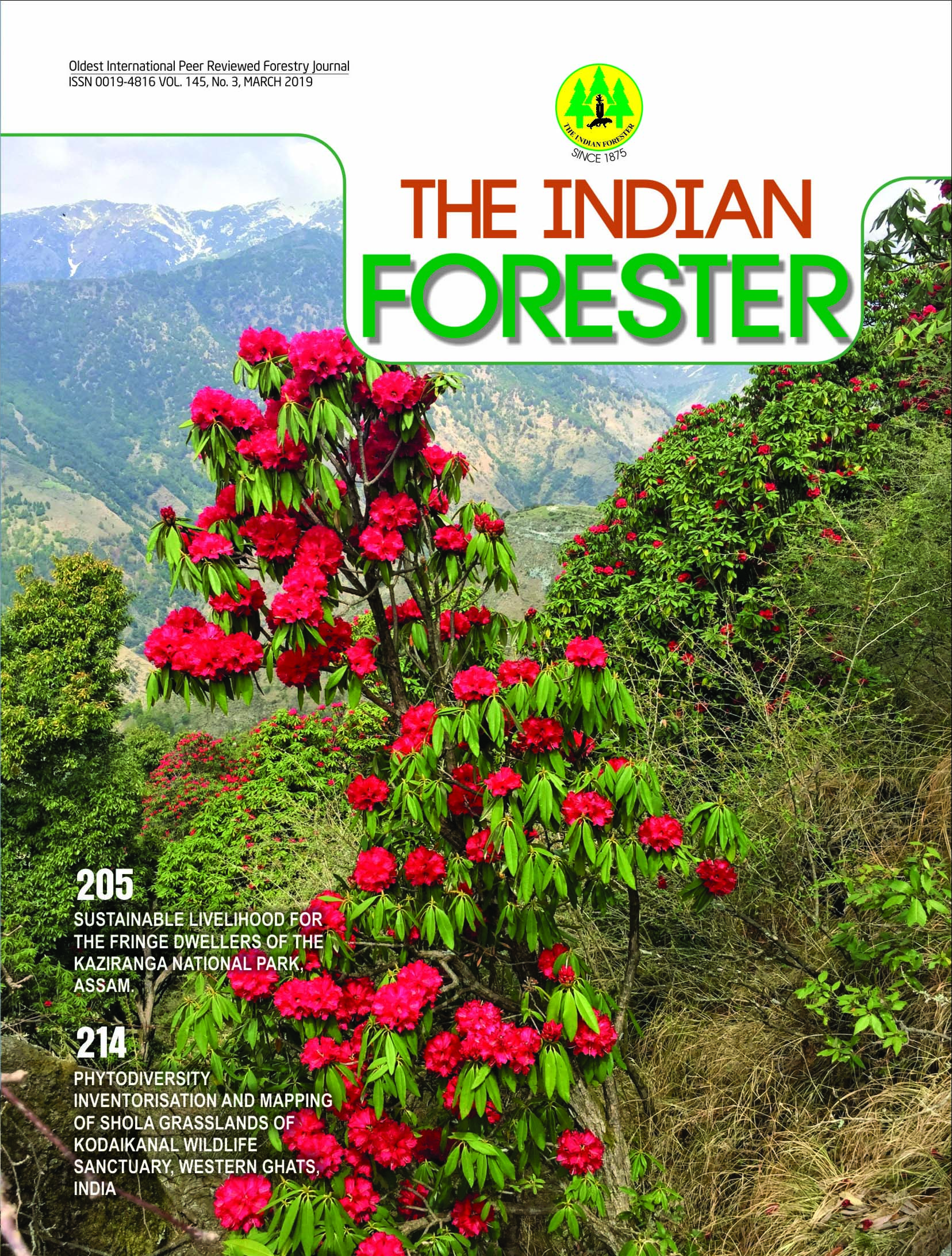Terminalia chebula Retz. (Harad) for Livelihood Security of Farmers of Kandi Villages of Jammu Region of Jammu and Kashmir
DOI:
https://doi.org/10.36808/if/2019/v145i3/144479Keywords:
Harad, Livelihood Security, Kandi.Abstract
Farmers of Kandi villages of Jammu adopted themselves to traditional Harad based agro-forestry practices servers as livelihood security for the resource poor farm families of the villages.The average yield per tree was recorded to be 100-120 kg, whereas there are reports of trees bearing 5-7 quintals of fruits/tree generating an average income of ₹1600-2000 per tree per year. A superior genotype named Raj Harad have been found existing in Mathwar block of Jammu district for over 100 years having height of 14.70 m, diameter at breast height of 101.81 cm2 with crown width of 18.50m bearing fruits of average weight of 44.60gm. About 7000-8000 wild/planted Harad trees in Mathwar block alone have a green and dry fruit production trade of more than 350 Tonnes and 15-20 Tonnes respectively, that is being exported to Pakistan and gulf countries through Amritsar border fetching a total income of more than 40 lakhs per annum. With coming up of superior grafting clones of Harad, the expected economic returns from these grafted clones at an early bearing age of 7-8 years will ₹593750 per ha that will be almost double than the existing seedling plantations.References
Anand R., Shukla R. and Dhawan B.N. (1999).Evaluation of antistress activity of some Indian medicinal plants. Indian J. Pharmacology, 31(1): 74.
Barthakur N.N. and Arnold N.P. (1991).Nutritive value of chebulic Myrobalan (Terminalia chebula Retz.) and its potential as a food source. Food Chemistry, 40:213-219.
Bhardwaj S.D. and Chakraborty A.K. (1994). Studies on Time of Seed Collection, Sowing and Presowing Seed Treatments of Terminalia bellirica Roxb. and Terminalia chebula Retz. Indian Forester, 120:430-439
Choudhary P., Khar S., Sharma R., Kumar P. and Abrol P. (2015). Medicinal trees for sustainable livelihood security in Kandi Areas of Jammu Region. In: Technological innovations, Opportunities and Challenges for Sustainable Rainfed Agriculture for Food and Livelihood Security (Razdan et al., eds.), 4th Jammu & Kashmir Agricultural Science Congress 163 pp.
Chung T.H., Kim J.C., Kim M.K., Choi S.C., Kim S.L., Chung J.M., Lee I.S., Kim S.H., Hahn R.S. and Lee I.P. (1995). Investigation of Korean plant extracts for potential phytotherapeutic agents against B-virus hepatitis. Phytotherapy Research, 9(6): 429-435
Gargi A. and Sinha K. (2017). Floral Biology and Breeding Behaviour in Terminalia bellirica and Terminalia chebula. Indian Forester,143: 449-454
Hossain M.A,. Arefin M.K., Khan B.M and Rahman M.A. (2005) Effects of Seed Treatments on Germination and Seedling Growth Attributes of Horitaki (Terminalia chebula Retz.) in the nursery. Research J. Agri. and Biological Sciences, 1(2): 135-141
Jain S.K. (1994). Medicinal plants.National Book Trust. New Delhi. 221 pp.
Sankanur M. (2012). Reproductive biology, molecular profiling and biochemical analysis of Terminalia chebula (Retz.) PhD Thesis Dr YSPUH & F Solan 259p
Prakash S. and Singh S.P. (1992). Studies on tannins from mangrove bark and myrobalan (Terminalia chebula) nuts. Indian J. Forestry, 15(3): 250- 253
Sato Y., Oketoni H., Singyouchi K., Ohtsubo T., Kihara M., Shibata H. and Higuti T. (1997). Extraction and purification of effective antimicrobial constituents of Terminalia chebula against methicillin-resistant, Staphylococcus aures. Biological and pharmaceutical bulletin, 20 (4):401-404
Srivastava R.K. (2000). Approach Grafting - a New Approach for the formation of Clonal Bank of Terminalia chebula. Indian Forester, 126:300-304
Surendra C. Sehgal R.N. and Paramathma M. (2003). Forest Tree Breeding. ICAR, New Delhi.
Thakur S. and Badiyala S.D. (2000). Studies on variability of fruits and seeds of Harad (Terminalia chebula). J. of Tree Sciences, 19(1 and 2): 7-12
Troup R.S. (1921). Silviculture of Indian Trees. International Book Depot. Dehradun. 1195pp.
Downloads
Downloads
Published
How to Cite
Issue
Section
License
Unless otherwise stated, copyright or similar rights in all materials presented on the site, including graphical images, are owned by Indian Forester.





